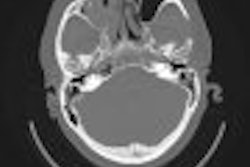Abdominal-Pelvic MRI by Richard C. Semelka, 2nd ed.
John Wiley & Sons, Hoboken, NJ, 2006, $295
This second edition of Abdominal-Pelvic MRI is well structured and will be useful for practicing radiologists, as well as for residents or fellows, who seek quality illustrations and a comprehensive discussion of this topic.
The book is organized into 16 sections based on organ systems. The first chapter is dedicated to diagnostic approaches to MR, protocols, and interpretation. The chapter includes a brief, basic review of common pulse sequences. It also covers the usefulness of dynamic multiphase gadolinium-enhanced sequences. There are multiple tables of current organ-specific protocols. Finally, there's a short, but relevant, section on emerging developments in MRI, including parallel imaging and whole-body MRI for screening.
The remaining sections also begin with a discussion of normal anatomy and physiology as they relate to clinical imaging. A brief overview of MR techniques for a particular organ system is covered, followed by a detailed and comprehensive review of benign, malignant, and inflammatory conditions. In the liver chapter, there is a discussion of contrast agents and their uses.
While this book is large (1,427 pages), about half is devoted to photo galleries. The images generally include multiple sequences, from the same patient, with a legend that describes the pulse sequences and the imaging findings.
More common disorders or lesions are given multiple illustrations showing typical and atypical features. Many images illustrate the use of multiphase 3D spoiled gradient echo sequences to improve conspicuity of lesions and aid in the differential diagnosis.
With more than 2,000 images, this is one of the most comprehensive image-based textbooks that I have used. The images procured on a 1.5-tesla magnet are generally high quality. Some are a little dark and sometimes blurry. This is particularly true for some of the liver images. Still, the findings are evident and there are many arrows that point out the more obscure findings.
The images in the large bowel section used to illustrate MR in staging colorectal adenocarcinoma staging are noteworthy, as are the MR colonoscopy images, although there aren’t many illustrations of the latter.
The section on the biliary system particular has excellent illustrative MRCP images. The chapter on the prostate is helpful and includes high resolution images, many obtained with an endorectal coil. The table of contents could be improved with a more detailed list of the subsections of each chapter.
By Dr. Stefanie WeinsteinAuntMinnie.com contributing writer
February 24, 2006
Dr. Weinstein is currently a fellow in body imaging at Stanford University Medical Center in Stanford, CA. She completed her residency at Stanford and attended medical school at Cornell University's Weill Medical College in New York City.
The opinions expressed in this review are those of the author, and do not necessarily reflect the views of AuntMinnie.com.
Copyright © 2006 AuntMinnie.com



















